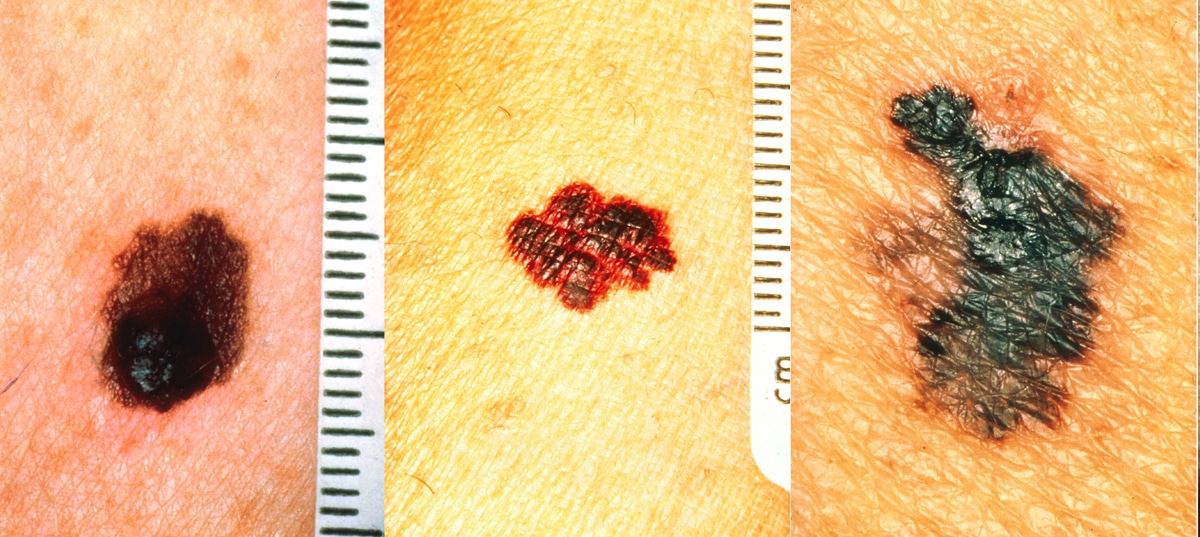The coming of summer can remind us of the damages that sunlight exposure can cause, for instance the melanoma.
The coming of summer brings vacations, sea, and tanning, but it’s better to be careful to avoid the risks of developing melanoma. Here are NefroCenter’s advice on how to prevent it and catch the possible signs of the disease in time.
The melanoma is a form of skin tumor that occurs when certain skin cells, the melanocytes, undergo a tumor transformation.
These skin cells produce melanin, a substance that protects the skin from potential damages caused by overexposure to sunlight.
The cutaneous melanoma mostly spreads in the 45-50 age group, although in recent years the incidence in younger age groups has increased. The overall cases have increased as well, especially in men.
The causes
The main cause of skin melanomas is the strong exposure to ultraviolet light, the so-called UVA and UVB rays. Therefore, an overexposure to sunlight without any kind of precaution can cause the deterioration of skin cells.
The exposure to artificial sources of UVA and UVB rays is even more dangerous, so tanning lamps and beds need to be used carefully.
One of the risk factors involves a deficiency of the immune system, caused by chemotherapy or transplants. Or even hereditary diseases affecting the skin.
People who have an high amount of moles and freckles on their skin, or people who got light-colored eyes, hair and skin tone are more exposed to risks.
The different kinds of melanoma
Melanomas can originate from the degeneration of intact skin or moles.
There are four different kinds of melanomas, the most common one being the surface spreading melanoma.
Other melanomas are the lentigo maligna one, the acral lentiginous melanoma and the nodular melanoma, which represents the most aggressive form.
There are five stages of melanoma classification. Stage 0 only involves the surface skin layer.
The classification from 1 to 4 is made according to the thickness of the mole, the speed of the tumor cells’ reproduction, any skin ulceration, the involvement of the lymph nodes and the metastases.
Moles as a warning sign
To keep the situation under control and prevent melanomas, it’s important to check the moles out, which act as signals for the possible onset of the pathology. There are specific aspects of moles that can represent signs of the disease and are classified according to the first five letters of the alphabet.
The asymmetrical shape, different from a benign mole which has a circular and regular shape. Irregular and indistinct edges of the mole.
Variable color, even with different shades within the mole itself. Increasing dimensions in terms of width or thickness. Evolution of the mole, rapidly changing appearance.
Other signs to look out for are itchy or bleeding moles, red areas, and lumps surrounding the mole.
NefroCenter’s advice regarding prevention
The main method to prevent this disease involves the correct exposure to sun rays, especially in the hot seasons, or to tanning treatments. The most “dangerous” time slot for sun exposure is between 10am and 4pm.
The main protection may be to wear a hat and sunglasses, especially for those who have light hair, eyes, and skin tone. Using sunscreens with high protection values is just as important.
These precautions are even more important for children. The degeneration of skin cells can occur over long periods and can result from an alteration that might have been starting since childhood.
A periodic control of the moles is also important, both autonomously and with a specific dermatological visit.
With these methods, it’s possible to notice any changes in the shape, consistency, and color of the moles thus allowing to resort to treatment.
Clinical examinations
The melanoma diagnosis requires specific tests, starting from the dermatological examination with epiluminescence. The mole gets observed with a magnification and illumination technique, to examine its edges, colors, shape, and texture.
The biopsy gives more accurate results by analyzing a sample of skin tissue. If any skin tissue mutations are detected, diagnostic imaging is used to check if and where the disease has spread in the body. These tests include magnetic resonance, chest radiography, CT, and Pet.
Cures for the melanoma
The first type of treatment for melanoma is surgery. In this case, the tumor tissue and a small healthy part around the diseased skin tissue get removed. This is done in order to eliminate all cancer cells.
In some cases, surgery is also performed to eliminate the metastasis and lymph nodes that get attacked first by the cancer cells.
Medical research has made it possible to develop therapies that avoid the use of chemotherapy even in cases where the disease is in an advanced stage. These are immunotherapy and target therapy.
In short, the choice of the therapy must be proportional to the extent of the disease. Therefore, it’s also possible for the patient to undergo localized therapies.

